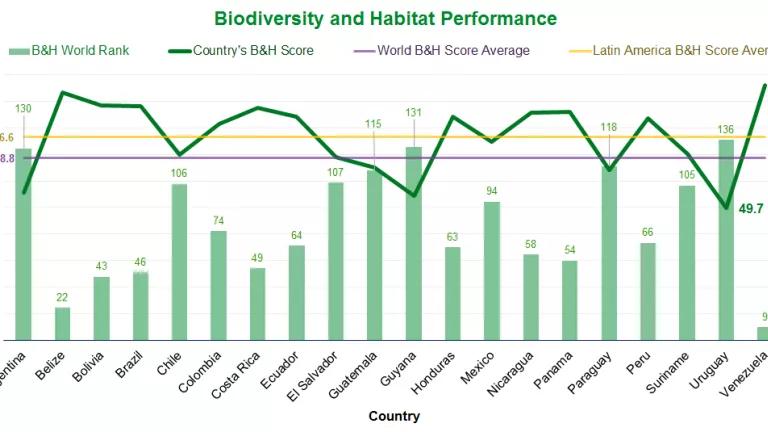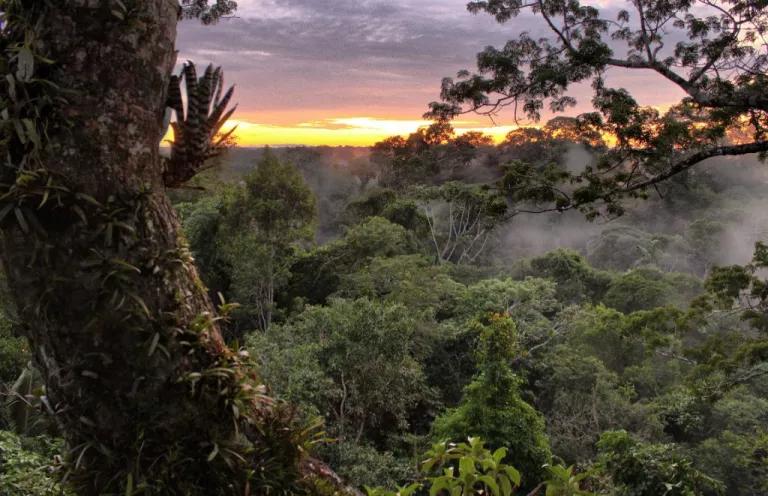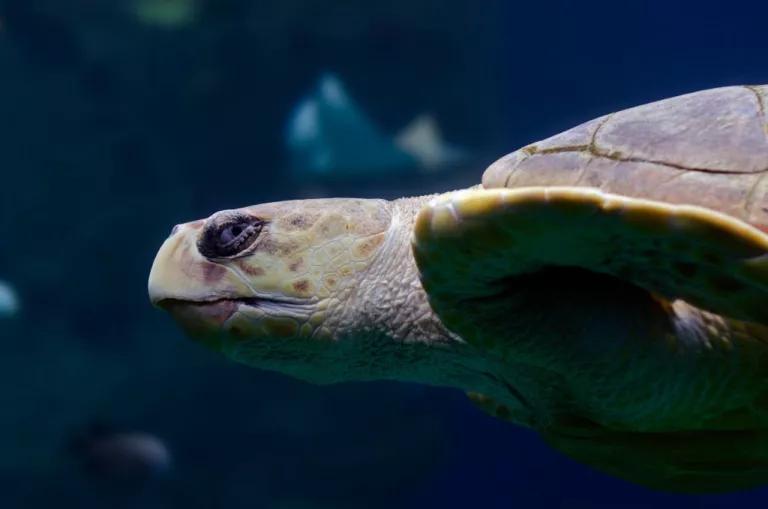Latin America and International Day for Biodiversity

May 22 marked International Day for Biological Diversity, a day to reflect on the importance of protecting the planet’s ecosystems and the species that inhabit them. Latin America is home to spectacular natural treasures—from the thriving waters of Mexico’s Gulf of California, to the biological intensity of Central and South America’s forests, to the unique biodiversity of Patagonia. The latest Environmental Performance Index (EPI), showed that Latin America was the second highest rated region in the world in the Biodiversity and Habitat category with a score of 76.5 out of 100, almost eight points higher than the world average. However, much more remains to be done to ensure Latin America’s biodiversity is adequately protected over the long-term. **To learn more about the region’s EPI results read NRDC’s blog post for Earth Day (en español).**
Latin America is a biodiversity powerhouse
With over thirty percent of the world’s species and three of the top five countries (Brazil, Colombia, and Mexico) with the most bird, amphibian, mammal, reptile, fish, and plant life, Latin America is a biodiversity powerhouse. Much remains to be learned about the region’s species, many of which may still be undiscovered. For example, Ecuador has studied only 2 and 5 percent of its marine and terrestrial biodiversity, respectively. Ecuador recently established a National Biodiversity Research Agenda to study the remaining 95 percent. The research will focus on understanding the main threats to biodiversity, including deforestation and illegal trafficking of flora and fauna, and how to incorporate the country’s biological riches into the productive matrix. Meanwhile, a three-year scientific survey of Madidi National Park in Bolivia led to the discovery of 4,000 new species. Based on the new discoveries and scientific calculations, it is estimated that there may be more than 11,000 species in the park; making it likely the most biodiverse park on the planet. Scientists also consider Manu National Park in Peru and Yasuni National Park in Ecuador among the most biodiverse protected areas in the world.

Threats to biodiversity require urgent action
This remarkable biodiversity is at risk of disappearing due to deforestation, agricultural expansion, pollution, climate change and the invasion of alien species. A recent report by the Intergovernmental Science-Policy Platform on Biodiversity and Ecosystem Services (IPBES) found that since European colonization of the Americas, the hemisphere has lost 30 percent of its species and an additional 23 to 24 percent is at risk of extinction. Also at risk are the many services provided by nature, which are valued at US$24 trillion per year in the Americas alone. The report also concluded that by 2050 climate change could have as big an impact on biodiversity loss as land use change. For example, Colombia is at risk of losing 30 percent of its biodiversity due to climate change, according to Luis Gilberto Murillo, the Minster of Environment and Sustainable Development.
In the face of these threats and the importance of biodiversity to human well-being, it is urgent to take action to protect the region’s ecosystems and species. For instance, floodplains in Orinoquia, Colombia shelter thousands of native species, play a key role in conserving the region’s water resources, and transform carbon dioxide into oxygen. Yet unsustainable agroindustry, including palm monoculture, is putting pressure on this important ecosystem. Similarly, protecting mangroves is critical for biodiversity but also a key part of ensuring food security and the fight against climate change. A global map of carbon reserves shows that mangroves in northern South America harbor nearly as much “blue carbon” as mangroves in Asia. The map also shows that Guatemala, Honduras, Brazil, Mexico and Cuba are among the countries with most mangrove loss. Preserving biodiversity will also help protect the region’s residents from the appearance of new infectious diseases and increasing outbreaks of epidemics. According to the National Commission of Biological Diversity in Peru, the loss of biodiversity, as well as climate change, are related to the spread of viral diseases such as Zika, Dengue and Chikungunya that have hit both urban and rural populations.
Success stories are possible
While the threats to biodiversity abound, there is also good news. There are success stories of species rediscovered and work done to safeguard and bring back biodiversity. For example, after 75 years, the loggerhead turtle (Caretta caretta) returned to spawn at the beaches of West Bay in Honduras. Authorities of the Institute of Forest Conservation have already established measures to monitor and protect the turtle and the more than 100 eggs that were deposited. Another example is the rediscovery of the San Quintin kangaroo rat (Dipodomys gravipes), the biggest rodent species in Mexico. Unseen after 1986 and thought to be extinct, it was found in the arid shrublands of Baja California after 32 years. Also, in Cuba, scientists have successfully reproduced the last specimen of Aralia rex, a rare species of tree. Lastly, in order to understand the incredibly diverse habitats in Latin America, a new collaboration between researchers in the UK and Argentina, Brazil, Chile and Peru has been established. The new Latin American Biodiversity Programme, a £9 million (US$12 million) initiative, will bring together world-class scientists and the latest techniques to study the region’s biodiversity, the impacts of deforestation and climate change, and how to maintain and restore it.

Political will is the key
Yet, with several Latin American countries heading into elections, the future of the region’s biodiversity will depend on how incoming leaders prioritize the environment. A new study by Instituto Humboldt, which analyzed the environmental government proposals of the presidential candidates for Colombia, revealed significant gaps, including: local governance issues, conservation strategies, management of protected areas, habitat restoration, integration of traditional and scientific knowledge, forestry, fishery and aquaculture policies, and budget support, among others. Meanwhile, in Mexico, environmental NGOs have proposed ten actions that presidential candidates could take to protect the country’s natural treasures. Biodiversity featured prominently among the ten topics, particularly its relationship to megaprojects. The risks to the Latin America’s biodiversity—and the implications for human well-being and the region’s development—are alarming, but there is still time to turn back the tide. The encouraging results on the EPI index Biodiversity and Habitat category demonstrate that concerted efforts to protect biodiversity can have significant impact.
